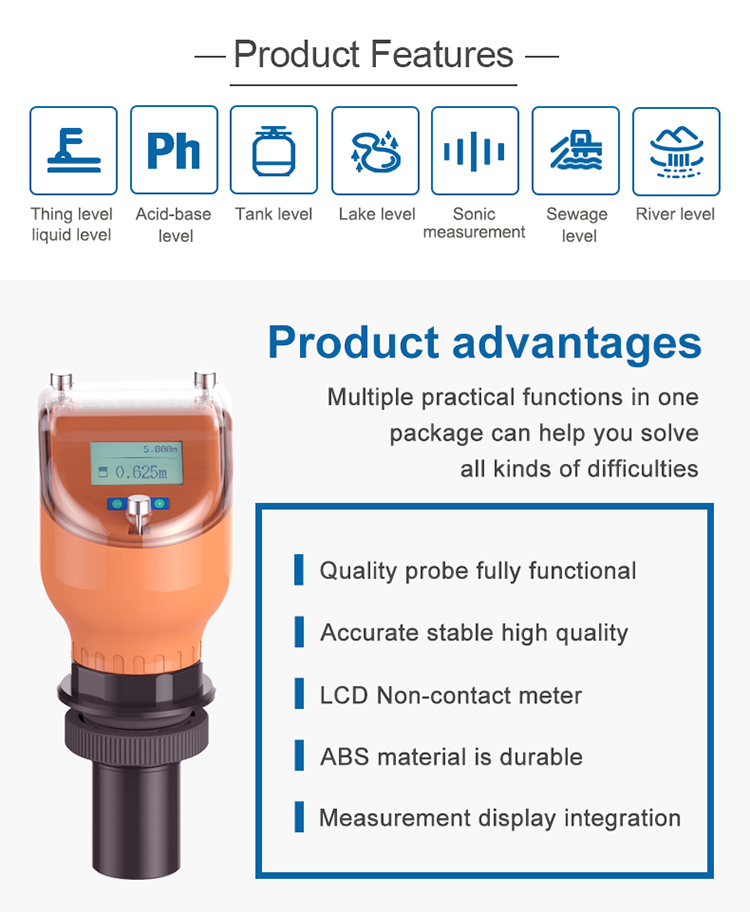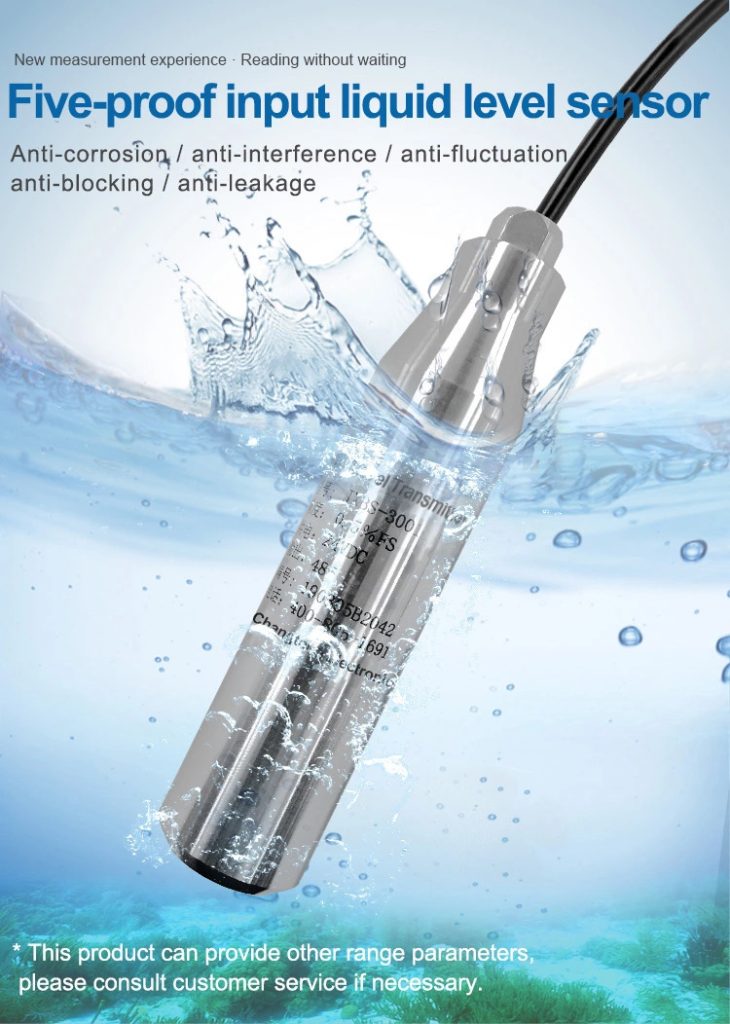Summary:
With the development of science and technology, human beings have invented countless kinds of liquid level measurement methods, from the ancient ruler to the modern photoelectric, ultrasonic, radar measuring instrument. Liquid level sensor and liquid level switch have become a “good hand” in petrochemical, metallurgy, electric power, pharmaceutical, water supply and drainage, environmental protection and other fields, playing an important role in the industrial field. Ultrasonic liquid level sensor and input liquid level sensor which is more accurate?
Working principle of ultrasonic liquid level sensor:
Ultrasonic wave is a mechanical wave whose vibration frequency is higher than that of sound wave. It is produced by the vibration of the energy converter chip under the excitation of voltage. It has the characteristics of high frequency, short wavelength, small diffraction phenomenon, especially good directivity, and can become the ray and directional propagation. Ultrasonic penetration of liquid, solid power is very large, especially in the sunlight opaque solid, it can penetrate dozens of meters of depth.
When ultrasonic waves meet impurities or interface, they will produce significant reflection and form reflection into echo. When ultrasonic waves meet moving objects, they can produce Doppler effect. Therefore, ultrasonic detection is widely used in industry, national defense, biomedical and other aspects of ultrasonic as a means of detection, must produce ultrasonic and receive ultrasonic. The device that performs this function is the ultrasonic transducer, commonly known as the ultrasonic transducer, or ultrasonic probe.

Disadvantages:
However, ultrasonic liquid level sensor has a certain blind area, as we all know, the so-called blind area is caused by the physical characteristics of ultrasonic, because the ultrasonic probe surface downward from the start of a short distance can not normally detect the reflection echo, this small distance is called the ultrasonic liquid level sensor blind area.
The reflected wave cannot be detected in this short distance because the ultrasonic level sensor cannot detect the reflected echo at the same time when it sends the ultrasonic pulse. Besides, the ultrasonic pulse has a certain time width, and the sensor still has residual vibration after the ultrasonic pulse is transmitted, during which the ultrasonic liquid level sensor cannot detect the reflection echo.
Therefore, the blind area of ultrasonic level sensor is not the same according to the different range. When the range is small, the blind area is small; when the range is large, the blind area is large. But they are usually between 30cm and 50cm. Therefore, usually in the device of ultrasonic liquid level sensor time blind area must be thought into. In special occasions, there is a need for a small blind area. At this time, we can think about the small blind area ultrasonic liquid level sensor, whose blind area is usually only 4-6cm. But its range is very small, only 0.6m.
In many areas of liquid level measurement, due to the constraints of space and device conditions, ultrasonic level sensors with very small blind spots are required. Therefore, when the highest object position is measured, such as into the blind zone, the appearance will not be correctly detected, there will be errors. The level meter can be raised if required. In addition, for the application of liquid level, generally in the detection of water level and other fields for the blind area is not high, but the requirements for the range is relatively high, on the contrary, for some applications such as water tanks, there will be blind area requirements
Working principle of input liquid level sensor:
Input liquid level sensor is one of the many classification of liquid level sensor, mainly for hydraulic, liquid level measurement, is widely used in many fields. Input liquid level sensors generally use the piezoresistive effect of diffused silicon or ceramic sensors to convert static pressure into electrical signals, which are temperature compensated and linear corrected. Convert to 4-20mADC standard current signal output. The input liquid level sensor is a static pressure liquid level measurement. In the liquid medium, the pressure generated by a certain depth is generated by the weight of the medium above the measurement point. It is proportional to the density of the medium and the local gravitational acceleration.
Therefore, the physical quantity measured by the input liquid level sensor is actually pressure, which can also be known by the calibration unit of the sensor. The actual liquid level must be obtained through conversion after knowing density and gravitational acceleration. Such conversion in the industrial field is usually through the secondary instrument or PLC. Generally applicable to petrochemical, metallurgy, electric power, pharmaceutical, water supply and drainage, environmental protection and other systems and industries of various media level measurement.

Input type liquid level: input liquid bottom, contact measurement, poor accuracy, measurement value and density relationship is large, the need for atmospheric compensation, cable hanging installation to be fixed, not suitable for the occasion of moisture condensation. The shortcoming of input liquid level sensor is that the measurement signal needs to be converted. Can not measure the temperature of high temperature media more than 125℃; The density of the measuring medium must be uniform.